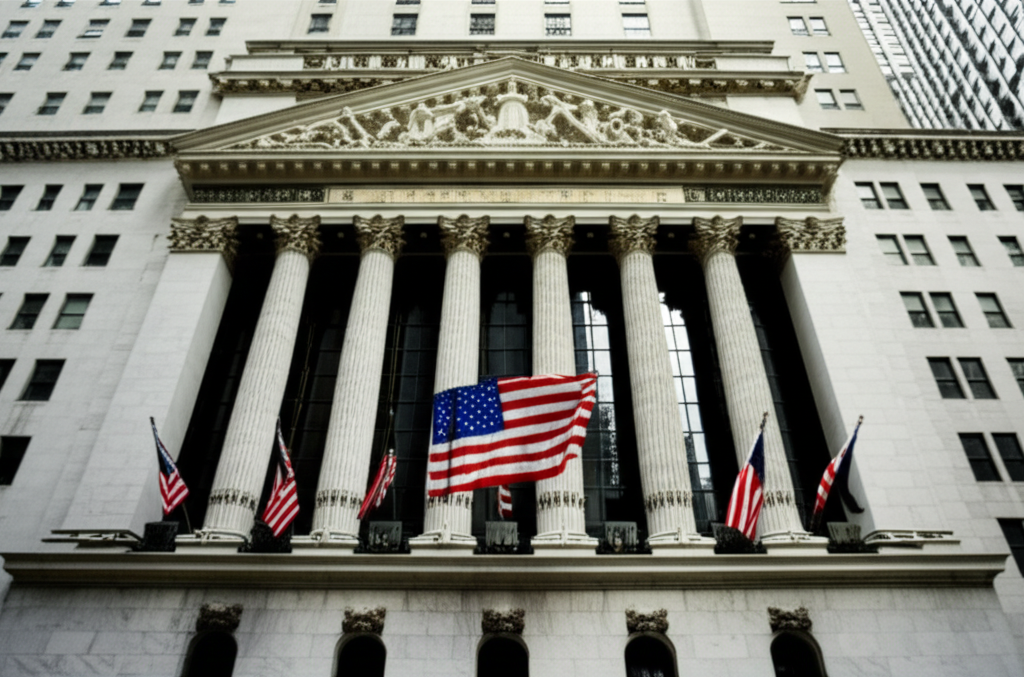S&P 500 Recovery Slows With Fresh Highs Still Out of Reach
The bullish momentum that characterized the early part of the year for the S&P 500 appears to be moderating, with the benchmark index struggling to sustain its upward trajectory and new all-time highs remaining tantalizingly out of reach. After a period of robust gains that saw the index flirt with and occasionally breach historical peaks, a sense of caution has permeated market sentiment, leading to a noticeable deceleration in its recovery. This shift highlights a more complex economic landscape than previously anticipated, where a confluence of factors is now weighing on investor optimism.
For young investors navigating the complexities of the financial markets, understanding the S&P 500’s current state is crucial. As a capitalization-weighted index of 500 of the largest U.S. publicly traded companies, it serves as a critical barometer for the health of the U.S. stock market and, by extension, the broader economy. Its recent struggle to build on previous successes signals a period of consolidation, or perhaps even a mild correction, rather than a continuation of the rapid ascent witnessed earlier.
Several key headwinds are contributing to this slowdown. Foremost among them are persistent concerns surrounding inflation and the path of interest rates. While inflation has shown signs of cooling from its peak, recent economic data, particularly consumer price index (CPI) reports, have indicated that disinflation may not be proceeding as smoothly or as quickly as the Federal Reserve and market participants had hoped. This has led to a recalibration of expectations regarding interest rate cuts. Initially, markets had priced in multiple rate reductions by the Fed this year, fueled by the anticipation of a ‘soft landing’ for the economy. However, stronger-than-expected economic growth, coupled with sticky inflation, has pushed back the timeline for potential rate cuts, and some analysts are even questioning the likelihood of any significant cuts this year. Higher-for-longer interest rates tend to act as a drag on equity valuations, especially for growth-oriented companies that rely on future earnings potential.
Beyond monetary policy, corporate earnings present a mixed picture. While many companies have reported solid results, the forward guidance from some industry leaders has been cautious, reflecting uncertainties about consumer spending, geopolitical risks, and input costs. Sectors that benefited disproportionately from the AI boom, particularly technology, have continued to show resilience, but the broader market needs a wider array of sectors contributing to growth to push past current resistance levels. Geopolitical tensions, from ongoing conflicts to trade disputes, also introduce an element of unpredictability, prompting investors to adopt a more risk-averse stance. Supply chain disruptions, though less severe than during the pandemic, still pose challenges for various industries, further impacting profit margins and investor confidence.
Furthermore, market valuations themselves are a point of discussion. Following the strong rally, the S&P 500’s price-to-earnings (P/E) ratio has climbed, leading some analysts to suggest that the market is already “fully priced” or even expensive, making it harder for stocks to advance significantly without a substantial improvement in fundamentals or a clear catalyst. This elevated valuation leaves less room for error, making the market more sensitive to negative news or economic disappointments. Investor sentiment, while not bearish, has certainly shifted from the unbridled optimism seen earlier in the year to a more discerning and cautious approach, with greater emphasis on identifying quality companies with strong balance sheets and consistent earnings.
The path forward for the S&P 500 is likely to be characterized by volatility and a greater reliance on incoming economic data. Key events such as upcoming inflation reports, employment figures, and the Federal Reserve’s policy meetings will be closely scrutinized for signals regarding the direction of monetary policy. While the long-term outlook for the U.S. economy remains generally positive, the immediate future suggests that investors should brace for a more measured and perhaps challenging period for equity markets as the index seeks to consolidate its recent gains before potentially embarking on another leg higher. The journey back to fresh all-time highs is proving to be a slow and arduous one, demanding patience and adaptability from market participants.





